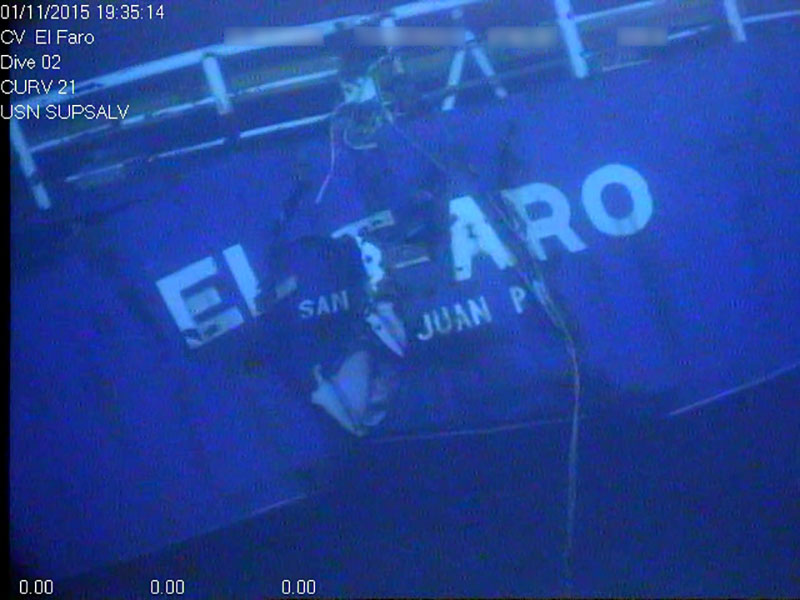A Coast Guard report on the 2015 sinking of the cargo ship El Faro calls for 31 safety improvements to the U.S. maritime fleet, from eliminating open lifeboats and requiring new high-water alarms to improving marine hurricane warnings.
The final report of the Coast Guard Marine Board of Investigation (MBI), released on the second anniversary of the Oct. 1, 2015, sinking that killed 33 mariners, places much of the blame on Capt. Michael Davidson, master of the 790' ro/ro containership, and operator Tote Services.
Davidson “failed to act on reports from the third mate and second mate regarding the increased severity and narrowing of the closest point of approach to Hurricane Joaquin, and the suggested course changes to the south to increase their distance from the hurricane,” the MBI report notes.
But Davidson and his crew were also handicapped by their weather information systems, which failed to deliver timely updates and contributed to the captain’s decisions, according to the report. The Coast Guard and National Transportation Safety Board recommended changes to get more up-to-the minute information from the National Hurricane Center to mariners.
Perilously close to the eye of the category 3 hurricane near the Bahamas, the El Faro developed a list and lost power, leaving it vulnerable to the wind and waves, and capsized and sank around 7:40 a.m. The 40-year-old ship was equipped with open lifeboats that could not be deployed in those conditions, marine inquiry board members heard during the 288 hours of testimony in hearings at Jacksonville, Fla.
Their report calls for a review of lifeboat standards with an eye to upgrading all vessels to the modern Safety of Life at Sea (SOLAS) enclosed lifeboats.
Had the El Faro carried those escape craft, “our survival expert said the crew could have had a chance,” MBI chairman Capt. Jason Neubauer told reporters at a press conference Sunday in Jacksonville.
The board also blamed the Coast Guard and American Bureau of Shipping surveyors for shortcomings in the alternate compliance program of ship inspections. The regulatory system missed faults that contributed to the sinking in Hurricane Joaquin, including corroded ventilation stacks and engine lubricating oil pumps that failed when the ship listed, according to the report.
The board found that a 2005-2006 conversion that added container capacity to the El Faro, and lowered its freeboard by 2’, should have been designated a “major conversion” by the Coast Guard, said Neubauer.
Records showed that decision not to call it a major conversion based on a “precedence principle,” given that the Coast Guard had not designated similar conversions of sisterships El Yunque and El Morro as major conversions, the report noted.
During testimony the board focused on corrosion in the ventilation stacks as a possible contributing factor, after learning how Coast Guard inspectors had detected that problem on El Yunque months after the El Faro was lost.
“It was missed not only by Tote but by ABS and the crew … something that was missed by the entire regulatory system,” said Neubauer.
Water entered through an open scuttle to the ship’s No. 3 hold, and even after the scuttle was secured “water continued to flood into cargo holds through ventilation openings, and also likely between cargo holds through leaking gaskets on large watertight cargo hold doors,” the report said. “The El Faro crew did not have adequate knowledge of the ship or ship’s systems to identify the sources of the flooding, nor did they have equipment or training to properly respond to the flooding.
“Even though El Faro met applicable intact and damage stability standards as loaded for the accident voyage, the vessel could not have survived uncontrolled flooding of even a single cargo hold given the extreme wind and sea conditions encountered in Hurricane Joaquin.”
The MBI’s extensive list of safety recommendations includes high water alarms for all dry cargo ships, a review of requirements for ventilators and other hull openings, require watertight closure indicators on all bridge alarm panels, and require close circuit video monitors in cargo stowage areas.





